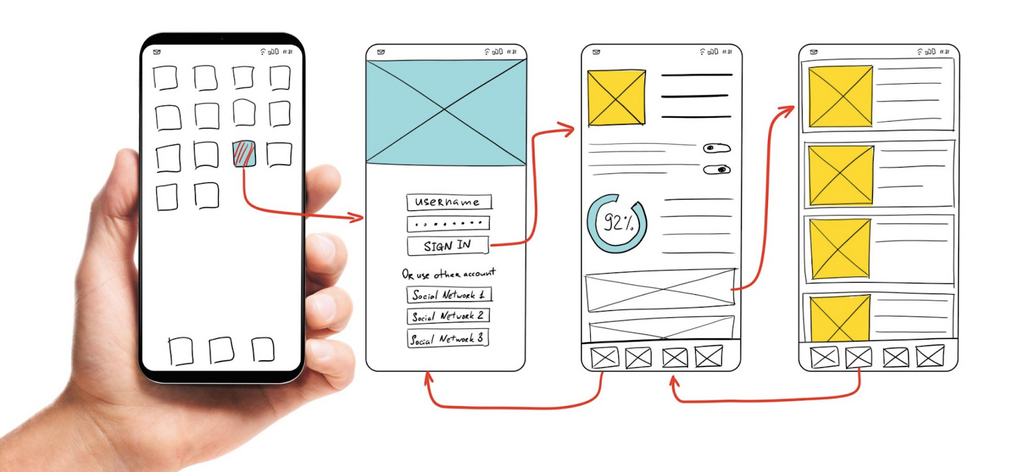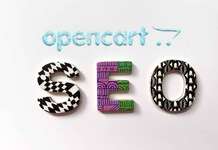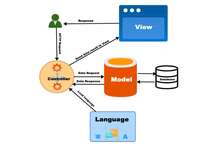In today’s digital age, where user expectations are constantly rising, the importance of exceptional user experience (UX) and user interface (UI) design cannot be underestimated. In this edition, we will explore the origins, definition, benefits, best practices, examples of good UX/UI design, role descriptions, costs, and the future of UI UX design services. Join us as we explore the fascinating world of UX/UI design and its profound impact on businesses and users alike.

Origin
UX/UI design has its roots in disciplines such as cognitive psychology, ergonomics, and industrial design. In the 1980s, as graphical user interfaces began to replace text-based interfaces on computers, the first user-centered approaches emerged. It was at this time that the term “user experience” began to gain importance.
One of the most influential pioneers in the field of UX design was Don Norman. In 1995, Norman published the book “The Design of Everyday Things” (The Design of Everyday Objects), where he introduced the term”user experience”(user experience) and highlighted the importance of designing products taking into account the needs, capabilities, and expectations of the user.
Another important milestone was the emergence of cognitive ergonomics, which focused on the relationship between the human mind and digital interfaces. In the mid-1990s, Jakob Nielsen, a usability expert, began promoting the importance of designing intuitive and easy-to-use interfaces through the application of usability principles.
With the evolution of the Internet and the explosion of the technology industry, UI UX design services have become a crucial field to ensure that digital products provide satisfying experiences to users. Over the years, methodologies and frameworks, such as User-Centered Design (UCD) and User Experience Design (UXD), have been developed to guide professionals in creating efficient and engaging interfaces.
UI design has also evolved rapidly. As graphical interfaces became more sophisticated, it became clear that the visual appearance and aesthetics of an interface were critical factors to the user experience. UI design focuses on the visual layout, typography, colors, icons, and other visual elements that make up a digital interface.
In short, UX/UI design has evolved over the decades, fusing knowledge from various disciplines to create digital products and services that meet the needs and expectations of users. As technology continues to advance, UX/UI design will continue to play a critical role in creating meaningful and engaging experiences for users.
Definition
UX/UI design encompasses a holistic approach to creating aesthetically pleasing, user-friendly, and functional digital experiences. UX focuses on the overall experience a user has when interacting with a product or service, while UI refers to the visual elements and interface components that enable that interaction.
Jesse James Garrett, a renowned UX designer, highlights the importance of UX/UI integration, stating that:
Benefits
Investing in UX/UI design generates numerous benefits. Research indicates that companies focused on user experience outperform their competitors, with up to a tenfold increase in their stock price over a ten-year period. A seamless user experience improves customer satisfaction, increases conversion rates, drives user engagement, and fosters brand loyalty.
UX/UI design’s significant impact on business results

According to a Forrester Research study, every dollar invested in UX design has a return of up to $100. Additionally, an Adobe report indicates that companies that prioritize UX design achieve a 400% higher conversion rate than their competitors. These statistics underscore UX/UI design’s significant impact on business results.
Improved user satisfaction:
Effective UX/UI design focuses on understanding user needs and expectations. By creating intuitive, easy-to-use interfaces, the user experience is improved, leading to greater satisfaction. A satisfied user is more likely to continue using the product or service and recommend it to others.
Increased user retention:
When users find an easy-to-use interface and enjoy a seamless experience, they are more likely to stay and continue using the product or service. A well-thought-out and engaging UX/UI design encourages user retention, which translates into a stronger user base and brand loyalty.

Reduced cart abandonment and increased conversions:
For e-commerce platforms, effective UX/UI design can help reduce shopping cart abandonment. By simplifying the purchasing process, making navigation easier, and providing clear product and pricing information, you increase the likelihood that users will complete their purchases. This leads to an improvement in conversion rates and an increase in revenue generated.
Long-term cost savings:
Investing in UX/UI design from the beginning can help avoid costly redesigns and modifications in later stages of developing a product or service. By understanding user needs and expectations from the beginning, significant errors and adjustments can be avoided, saving time and resources in the process.
Competitive differentiation:
In a saturated market, user experience can be a key differentiating factor. A well-executed UX/UI design can stand out from the competition and attract users. If users find that a product or service is easier to use and provides them with a pleasant experience, they are more likely to choose that option over other alternatives.
Brand loyalty:
Successful UX/UI design can create an emotional connection with users, leading to greater brand loyalty. When users have a positive experience, they are more inclined to maintain a long-term relationship with the brand and become brand advocates.
Improved efficiency and productivity:
A well-designed UX/UI design can improve efficiency and productivity for both end users and internal employees. An intuitive, easy-to-use interface allows users to complete tasks faster and more efficiently, increasing productivity and reducing frustration.
Better practices
To offer exceptional experiences, it is crucial to adhere to industry best practices, we list 10 examples of best practices:
User investigation:
Conduct extensive research to understand user needs, behaviors, and preferences. This includes creating fictional personas and conducting usability testing to gain valuable insights.
User-centered design:
Place the user at the center of the design process and make decisions based on their needs. The design must be intuitive, easy to use, and meet the user’s goals and expectations.
Clear user flow:
Design logical and coherent user flows to guide users through the different sections and functionalities of the product or service. A clear user flow reduces confusion and improves navigation.
Responsive Design:
Make sure the design adapts to different devices and screen sizes. A responsive design ensures an optimal user experience on mobile, tablet and desktop devices.
Attractive visual design:
Use an attractive and coherent visual aesthetic in interface design. Using colors, fonts, icons, and cohesive visual elements creates an aesthetically pleasing experience for users.
Simplicity and clarity:
Simplify the interface and keep relevant information and actions at the forefront. Avoid visual clutter and provide clear instructions so that users easily understand how to interact with the product or service.
Immediate feedback and response:
Provide instant feedback on user actions. This includes confirmations of actions, animations, and visual responses that indicate the status of interactions.
Iterative testing and prototyping:
Conduct continuous testing and iterative prototyping to gain user feedback. These tests allow you to identify problem areas and make improvements based on real data.
Accessibility:
Ensure the design is accessible to people with disabilities, such as including descriptive tags for images, good header structure, and adequate contrast for readability.
Constant updates and improvements:
UX/UI design is not a static process but requires continuous updates and improvements. Monitor design performance, collect user feedback, and make periodic adjustments to keep it fresh and relevant.






